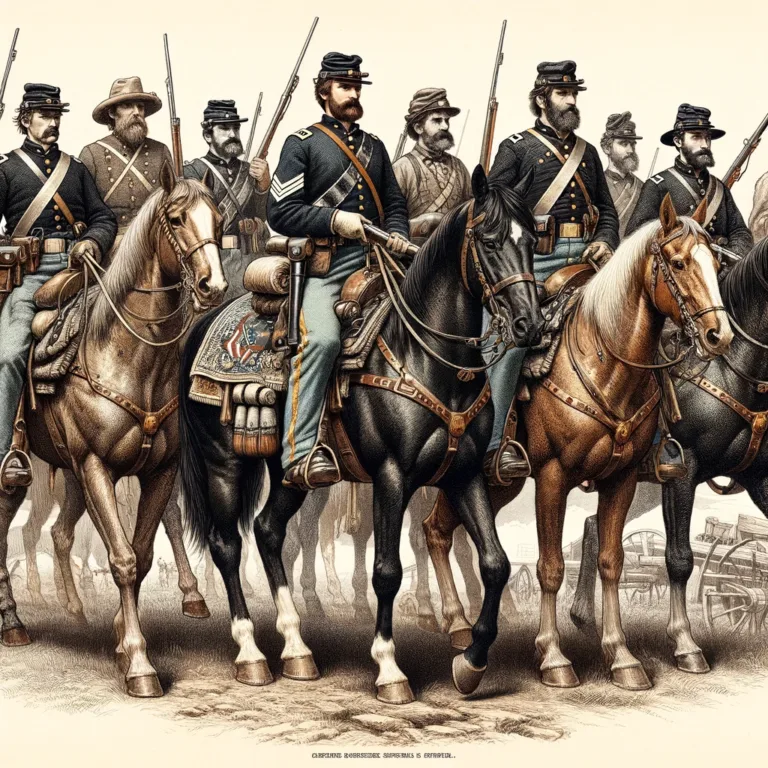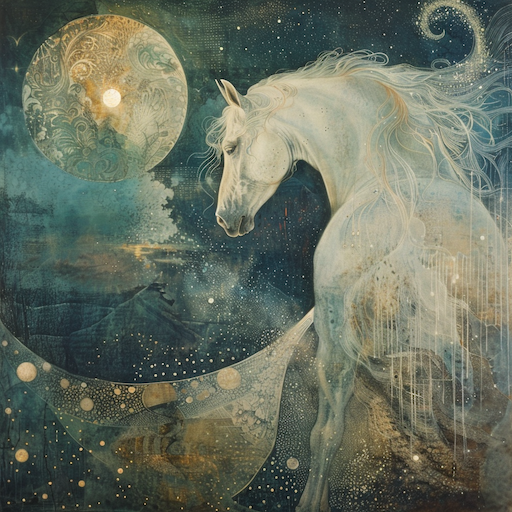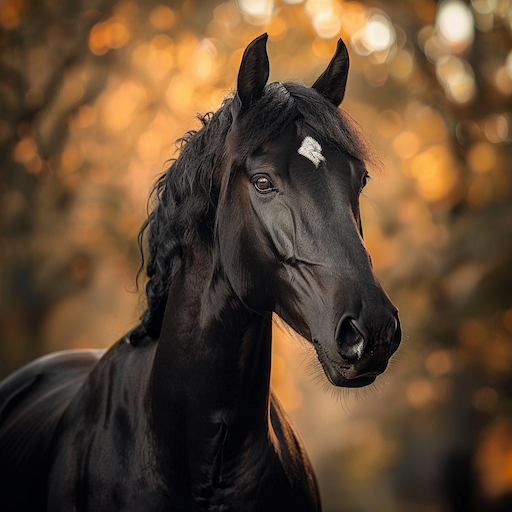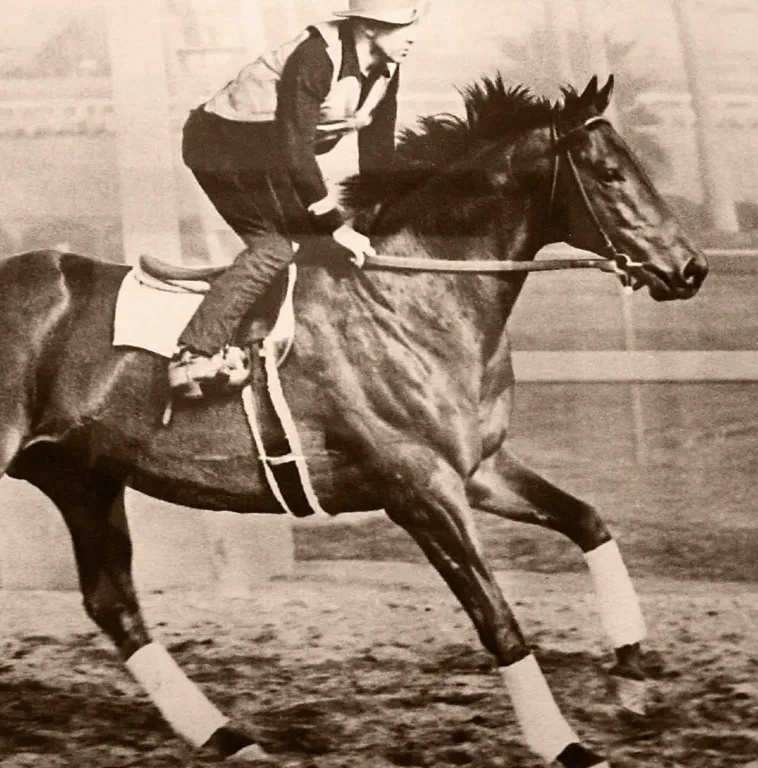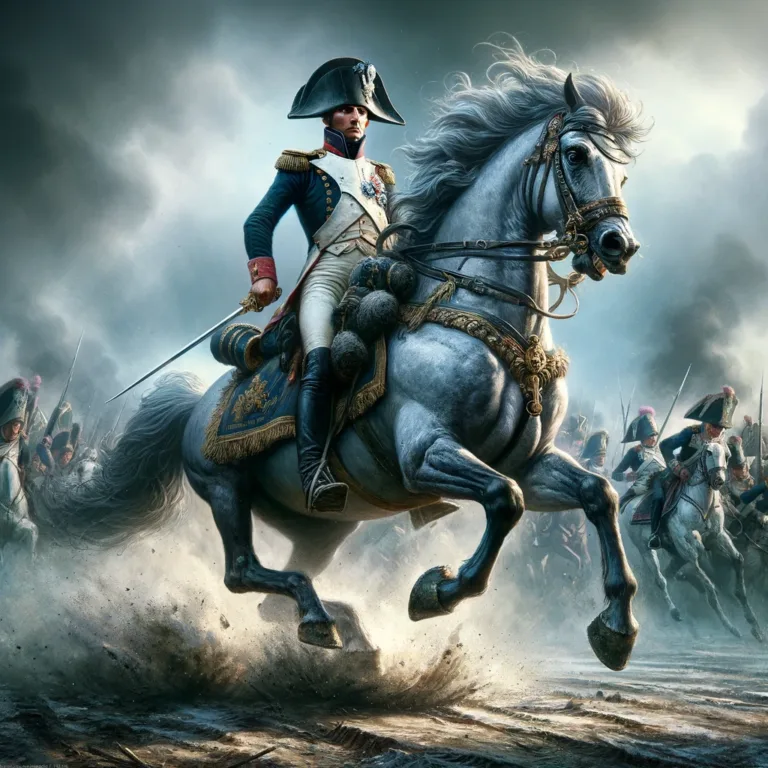Alexander the Great and Bucephalus: The Legendary Bond of a King and His War Horse
Through history, few figures capture the imagination quite like Alexander the Great. Born in 356 BC, Alexander III of Macedon was a king renowned for his extraordinary military genius and ambition. By the age of thirty, he had created one of the largest empires of the ancient world, stretching from Greece to northwestern India. His legacy is not just built upon his conquests but also on the cultural and political impacts he left behind. Yet, amidst the tales of battles and his empire, a story of companionship and loyalty stands out — the story of his horse, Bucephalus.
Bucephalus, whose name means “ox-headed,” possibly referring to a wide forehead or a brand mark resembling an ox’s head, is more than just a historical footnote. He is a legend in his own right. Described as a massive, strong, and majestic horse, Bucephalus was said to have a black coat with a large white star on his brow. Some accounts also speak of his fiery temperament, one that mirrored his master’s indomitable spirit.
The bond between Alexander and Bucephalus is a testament to the age-old connection between humans and horses. This magnificent steed was not only a witness to Alexander’s journey from a young prince to a legendary conqueror but also his steadfast companion. Their story transcends the realm of conquests and battles, touching the universal theme of mutual trust and respect between a horse and his rider. As we delve into the history and mythology surrounding Bucephalus, we unravel a tale that is as much about loyalty and courage as it is about the art of horsemanship and the unspoken bond that forms between a rider and his mount.
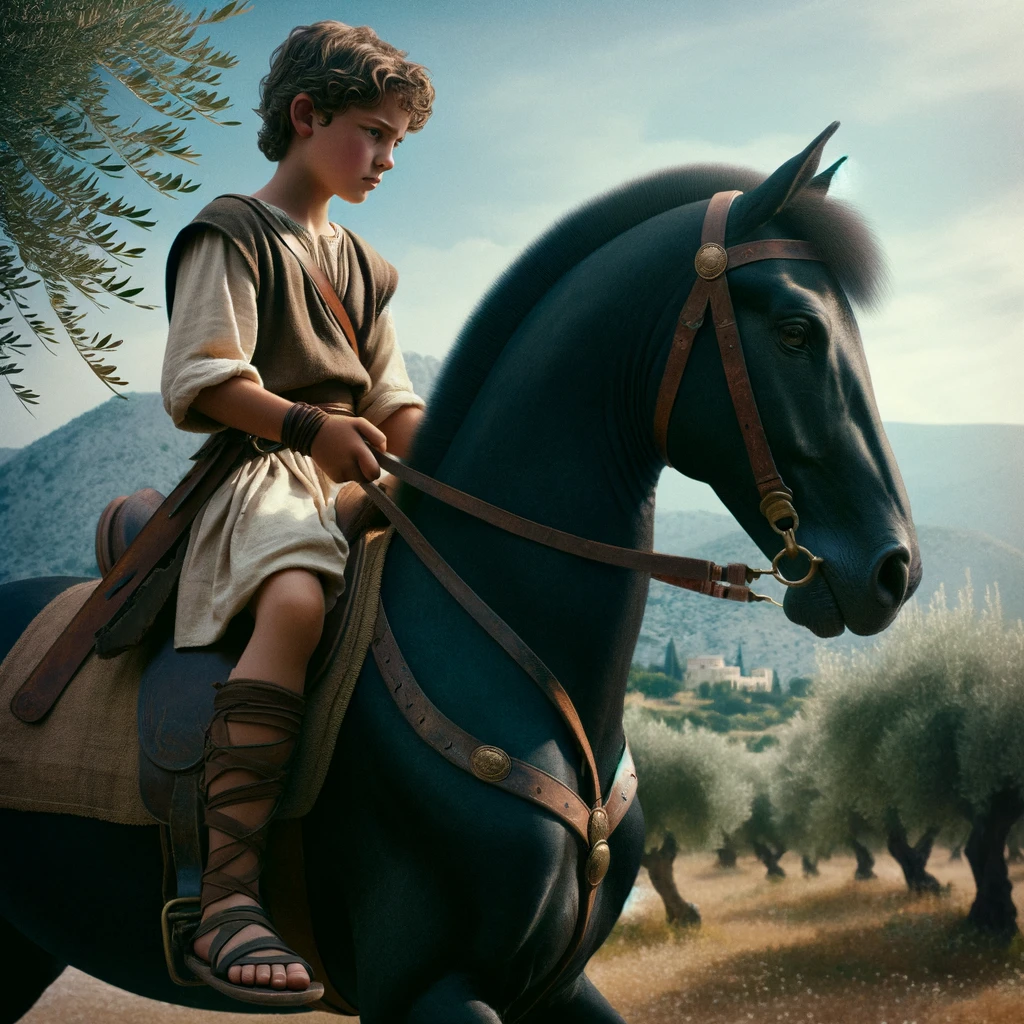
The Origin of Bucephalus
The tale of how Alexander the Great came to possess Bucephalus is as legendary as the horse himself. The story, often recounted through the lens of history and mythology, starts with a young Alexander, not yet a king, but already displaying the makings of the leader he was to become.
The young prince of Macedon was presented with a challenge in the form of an untamed horse, deemed wild and unmanageable by many. Bucephalus, with his imposing stature and fiery temperament, had intimidated all potential riders. His strength was immense, his spirit unyielding, and his behavior, unpredictable. Yet, it was this spirited nature that captivated Alexander. Where others saw a beast to be feared, Alexander saw a companion to be understood.
The story goes that Alexander, noticing the horse’s fear of its own shadow, turned Bucephalus towards the sun, thus calming the horse’s nerves. With a combination of patience, insight, and a natural understanding of the equine psyche, Alexander managed to mount and ride Bucephalus, succeeding where seasoned horsemen had failed. This act not only demonstrated Alexander’s bravery and intelligence but also his innate ability to connect with horses, a trait that would define much of his life and legacy.
The name Bucephalus itself holds significant meaning. Translated as “ox-head,” it is believed to be a nod to the horse’s broad forehead, which some thought resembled that of an ox. Symbolically, the name also represented strength and steadfastness, qualities that Bucephalus exhibited throughout his life. The ox, revered in many cultures for its power and resilience, was a fitting namesake for a horse that would go on to carry Alexander through numerous battles, sharing in his triumphs and challenges.
Bucephalus’s origin story not only paints a picture of a remarkable horse but also showcases the early signs of Alexander’s exceptional character. It’s a story that highlights the importance of understanding and empathy in taming and bonding with a horse, qualities that you, as an experienced horse enthusiast, know are crucial in forming a deep and lasting connection with these magnificent creatures.
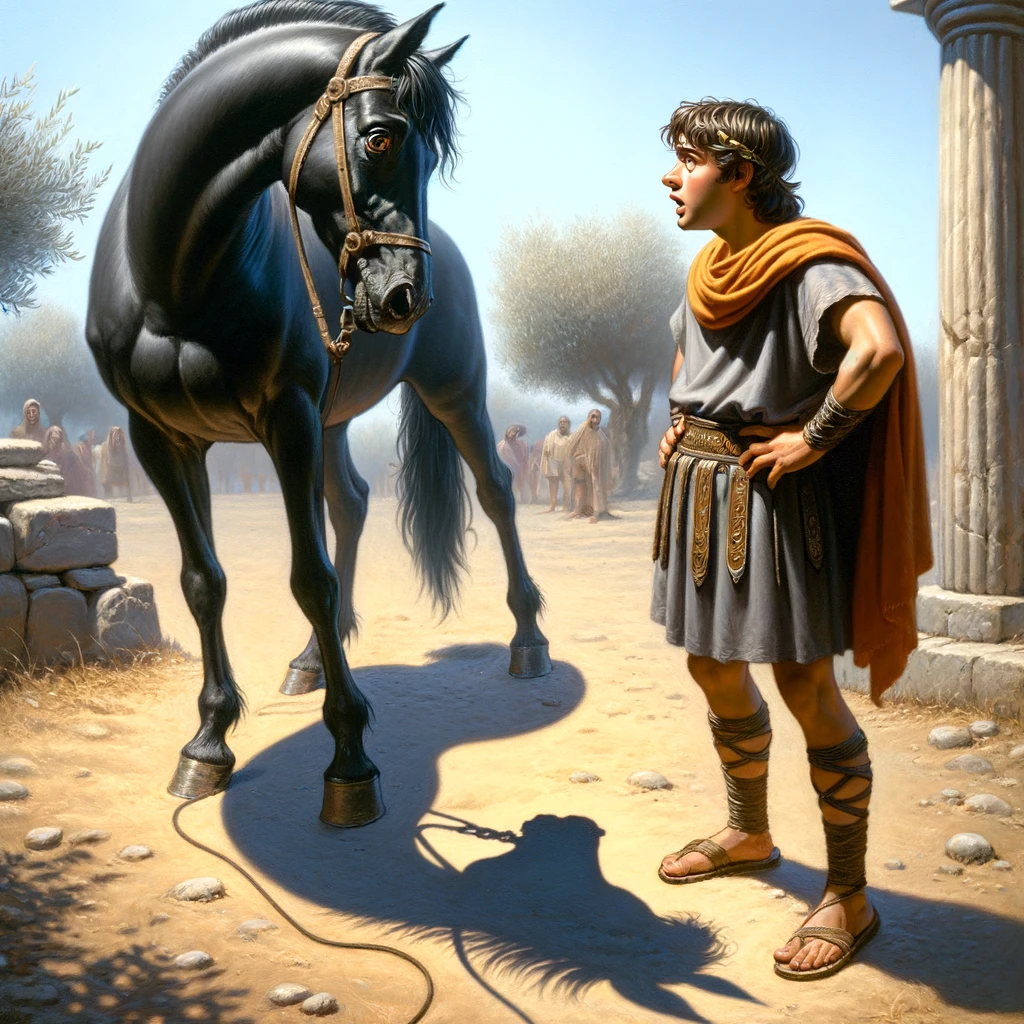
Description of Bucephalus
Bucephalus was said to be an equine of extraordinary stature and presence. While his exact breed remains a topic of historical speculation, many believe he was of Thessalian stock, a breed known for its strength and agility, qualities essential for a war horse. This breed, originating from the Thessaly region of Greece, was renowned for producing horses that were both resilient and powerful, traits that Bucephalus exemplified throughout his life.
In terms of physical appearance, Bucephalus was described as a striking figure. He was a large horse, though his exact size is not documented, he would have been robust enough to carry a warrior through battle. His coat was primarily black, a color often associated with majesty and strength in ancient times. The most distinguishing feature was the large white star on his forehead, a mark that not only set him apart visually but also added to his aura of uniqueness.
Bucephalus’s personality was as notable as his physical attributes. He was known for his intelligence, an essential quality that enabled him to navigate the chaos of battlefields and respond to complex commands. This intelligence was complemented by unwavering bravery. In the heat of battle, Bucephalus was unflinching, a trait that made him a reliable partner to Alexander. His loyalty to Alexander was legendary; he allowed no other rider, demonstrating a deep bond and trust in his human companion.
Moreover, his temperament, often described as fiery, was a testament to his spirited nature. Yet, this spirit was balanced with a capacity for gentleness, especially in the presence of Alexander. This duality of strength and gentleness is a characteristic you, as a horse expert, know is found in the most extraordinary of horses. Bucephalus was not just a war horse; he was a companion, a confidant, and a testament to the remarkable capabilities and complex nature of horses.

Alexander and Bucephalus: A Unique Bond
The relationship between Alexander the Great and his horse Bucephalus is a remarkable example of the deep bond that can develop between a horse and rider. This connection was rooted in mutual respect, understanding, and a shared spirit that transcended the usual relationship between a man and his mount.
From their first encounter, it was evident that Alexander and Bucephalus shared a special connection. When Alexander approached Bucephalus, it was not with force or intimidation, but with an understanding and empathy that was rare for his age and time. His ability to calm and ride Bucephalus when no one else could was not just a testament to his skill as a horseman, but also to the trust and rapport he was able to establish with the horse. This incident was the beginning of a relationship that would grow stronger with each battle and journey they shared.
Throughout their time together, Bucephalus and Alexander demonstrated an extraordinary level of synergy. In battle, Bucephalus moved with such harmony and responsiveness to Alexander’s commands that they seemed to be a single entity. This level of understanding between a horse and rider is something that you, with your extensive experience with horses, can appreciate as both rare and beautiful. It speaks to a level of communication that goes beyond words or gestures, a connection that is felt at a deep, intuitive level.
Numerous anecdotes highlight the depth of their bond. One such story tells of a time when Bucephalus was stolen. Alexander, in desperation, threatened to destroy an entire city unless his beloved horse was returned. This act was not just about the loss of a valuable war horse; it was about the loss of a companion, a friend, and a confidant.
The bond between Alexander and Bucephalus also highlights the emotional capacity of horses. Bucephalus’s loyalty to Alexander was profound; he was known to be difficult for others to handle, yet with Alexander, he was cooperative and gentle. This loyalty and trust in one individual is a trait often found in horses, reflecting the depth of their emotional intelligence and capacity for connection.
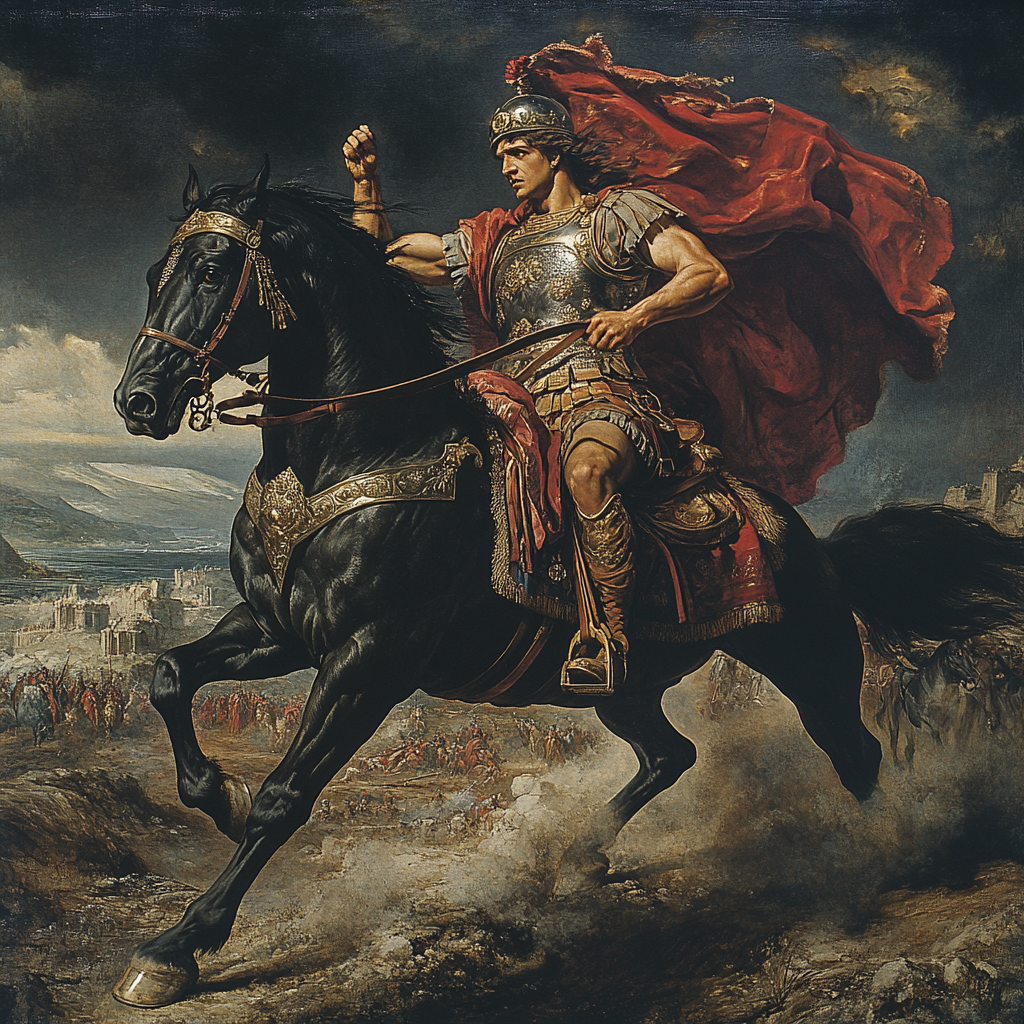
Bucephalus in Battles
Bucephalus’s role in Alexander’s campaigns was pivotal, not just as a mount, but as a symbol of strength and resilience. This magnificent horse carried Alexander through some of the most significant battles in history, showcasing not just physical prowess but also an unyielding spirit.
One of the most notable battles where Bucephalus proved his mettle was the Battle of Gaugamela in 331 BC. This battle, often considered Alexander’s greatest victory, saw Bucephalus maneuvering through chaos and danger, demonstrating extraordinary courage and stamina. In the thick of battle, amidst the clash of swords and spears, Bucephalus remained steadfast, a testament to his bravery and training.
Preparing a horse like Bucephalus for war would have been an exhaustive process. It would have involved not just physical conditioning to enhance stamina and strength, but also training to acclimate him to the noises and chaos of battle. This would mean getting him used to the sounds of clanging armor, shouting soldiers, and other war noises. Such training would also involve desensitizing him to sudden movements and ensuring that he could respond quickly to Alexander’s commands, even in the heat of battle.
The bond between Alexander and Bucephalus would have played a crucial role in this training. Your understanding of horses allows you to appreciate how trust and communication between a rider and his horse can significantly enhance training, especially for the rigors of war. Bucephalus’s trust in Alexander would have been paramount in his ability to remain composed and obedient during the tumultuous battles.
Moreover, Bucephalus’s care would have been of utmost importance. Ensuring that he was well-fed, groomed, and given adequate rest would have been essential in maintaining his health and combat readiness. The attention to his hooves, coat, and overall well-being would have been meticulous, given his value not only as a war horse but also as Alexander’s cherished companion.
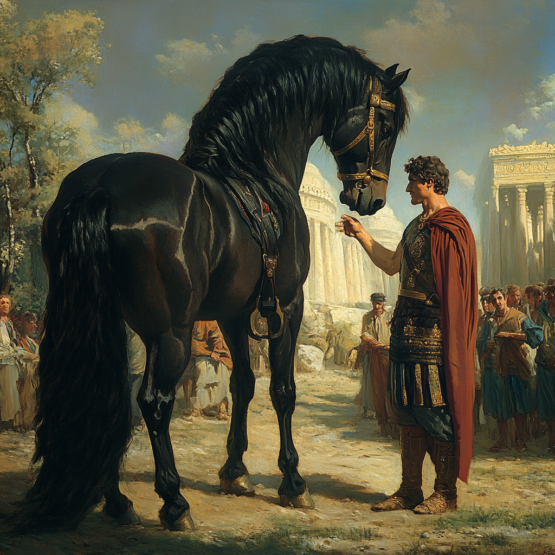
The Legend and Mythology
Over the centuries, Bucephalus has transcended his historical role as Alexander the Great’s war horse, becoming a figure of legend and mythology. The tales of his strength, loyalty, and courage have been embellished and romanticized, contributing to the mystique that surrounds both him and Alexander.
One of the most enduring legends about Bucephalus involves his origins. It’s said that he was a gift from the gods, a divine creature sent to accompany Alexander on his quest to conquer the world. This myth elevates Bucephalus from a mere mortal horse to a creature of celestial origin, underscoring the extraordinary nature of his bond with Alexander.
In another popular tale, Bucephalus is said to have had the ability to understand human speech and to communicate with Alexander. This legend speaks to the deep connection between horse and rider, highlighting a level of understanding and communion that goes beyond the ordinary.
Bucephalus’s symbolism extends into art and literature, where he is often depicted as more than a horse. In paintings and sculptures, Bucephalus is portrayed with a majestic and powerful form, often with Alexander in battle scenes, symbolizing not just their partnership but also the ideals of bravery, loyalty, and strength. In literary works, Bucephalus is frequently used as a metaphor for unwavering courage and unbreakable bonds of friendship.
The story of Bucephalus has also been used as a teaching tool in horsemanship and animal care. Your deep understanding of horses allows you to appreciate how Bucephalus’s story emphasizes the importance of empathy, understanding, and respect in the relationship between a horse and its handler.
Furthermore, the legends of Bucephalus have permeated various cultures and eras, reflecting the universal appeal of his story. His tale has been a source of inspiration for countless artists, writers, and horse enthusiasts, symbolizing the timeless bond between humans and horses.
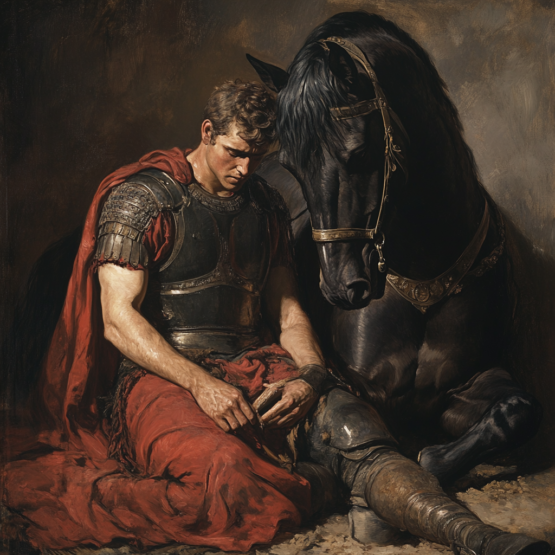
The Death of Bucephalus
The death of Bucephalus marks one of the most heartrending moments in the saga of Alexander the Great. According to historical accounts, Bucephalus passed away in 326 BC, following the Battle of the Hydaspes River in what is now Pakistan. The exact circumstances of his death are a subject of debate among historians. Some suggest that he died of battle wounds, while others believe he may have succumbed to old age and exhaustion after the strenuous campaign.
Regardless of the cause, the impact of Bucephalus’s death on Alexander was profound. Alexander, known for his stoicism and unyielding nature in battle, was deeply affected by the loss of his faithful companion. It is said that he mourned Bucephalus with immense sorrow, a testament to the depth of their bond. This reaction was not just the grief of losing a prized war horse; it was the emotional response to losing a friend and confidant who had been by his side through many of life’s trials and triumphs.
In honor of Bucephalus, Alexander founded a city, Bucephala, near the site of his death. This act of commemoration was not only a tribute to his beloved horse but also an indication of the significant role Bucephalus played in Alexander’s life and legacy. The founding of a city in Bucephalus’s name highlights the respect and admiration Alexander had for him, elevating his status from a mere animal to that of a hero.
The death of Bucephalus also symbolized the end of an era in Alexander’s campaigns. Bucephalus had been his companion since his youth, a constant presence through his rise to power and conquests. His passing could be seen as a turning point in Alexander’s life, marking the loss of a piece of his youth and the close of a chapter in his history of conquests.
As someone deeply connected with the world of horses, you can appreciate the profound impact the loss of such a horse would have. Bucephalus was not just a bearer of Alexander into battle; he was a creature that shared in the glory, challenges, and ultimately, the sorrows of his rider. The story of Bucephalus’s death and Alexander’s reaction to it resonates with anyone who has experienced a deep connection with a horse, embodying the profound sense of loss that comes with the passing of such a noble and loyal companion.
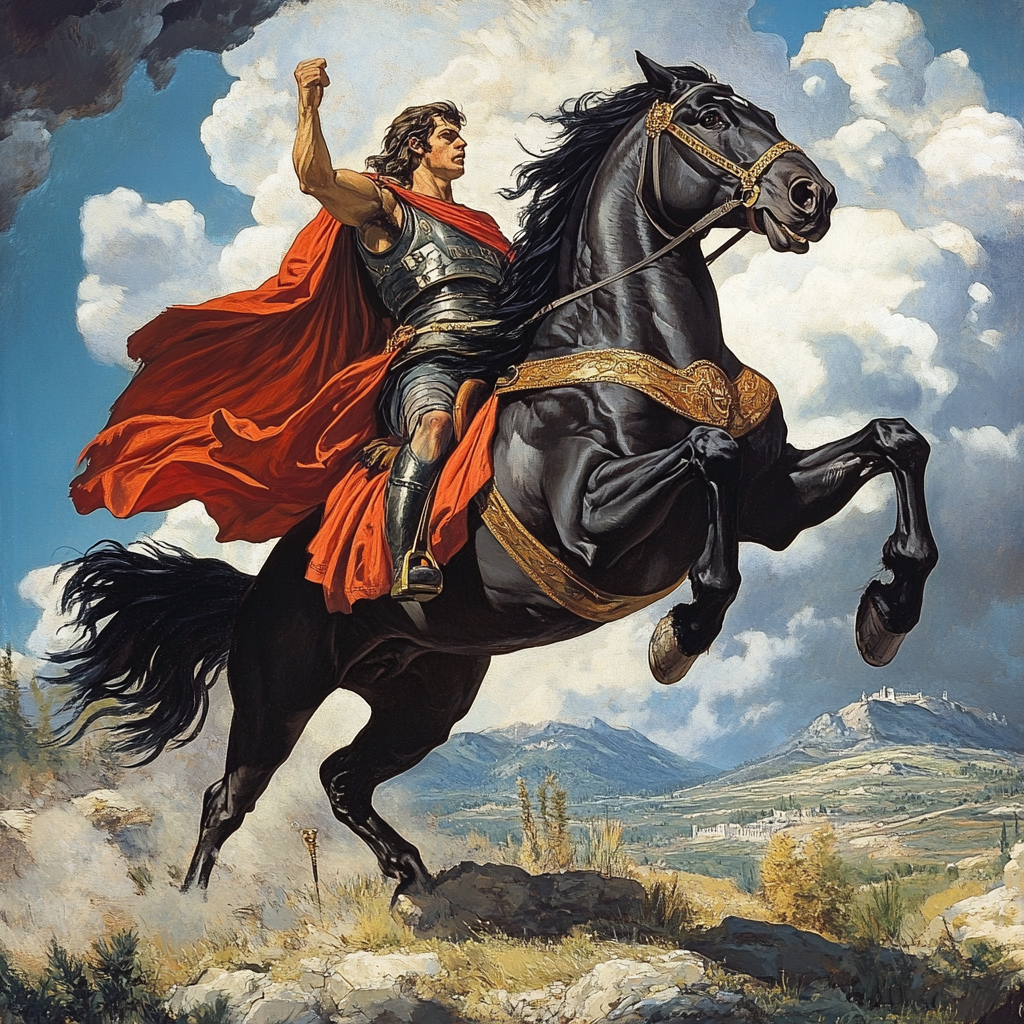
Legacy of Bucephalus
The story of Bucephalus has had a profound impact on the perception of war horses throughout history. His legend transcends the life of a single horse; it encapsulates the valor, strength, and indispensable role of war horses in ancient battles. Bucephalus has become a symbol of the quintessential war horse, embodying the characteristics that make a horse not just a tool of war, but a revered companion in battle.
Bucephalus’s bravery and strength in battle have set a standard for what is expected of a war horse. His ability to remain calm and responsive under the pressures of battle, his unwavering loyalty to Alexander, and his remarkable stamina and courage have been celebrated and aspired to in military history. This has influenced the training and handling of war horses, with an emphasis on developing these traits. Your extensive experience with horses gives you a unique perspective on how such legendary stories can shape our approach to horse training and care.
Furthermore, Bucephalus’s legacy has had a lasting impact on horse breeding. His qualities have been idealized in the breeding of horses, particularly in breeds known for their strength and bravery. While the exact breed of Bucephalus remains a subject of speculation, his characteristics have been sought after in various breeds throughout history. Breeds such as the Andalusian, known for their strength, intelligence, and calmness in various situations, are often thought to embody the spirit of Bucephalus.
Additionally, Bucephalus’s story has contributed to the cultural and symbolic representation of horses in general. He is often referenced as a standard of equine excellence, inspiring not just horse breeders but also artists, writers, and historians. The tales of his exploits with Alexander have fueled a fascination with the role of horses in history, highlighting their significance not just as beasts of burden, but as integral players in the shaping of empires and civilizations.
The legacy of Bucephalus also serves as a reminder of the deep emotional bonds that can form between horses and their riders. This aspect of his story resonates with anyone who has experienced a profound connection with a horse, underscoring the importance of mutual respect, understanding, and empathy in these relationships.
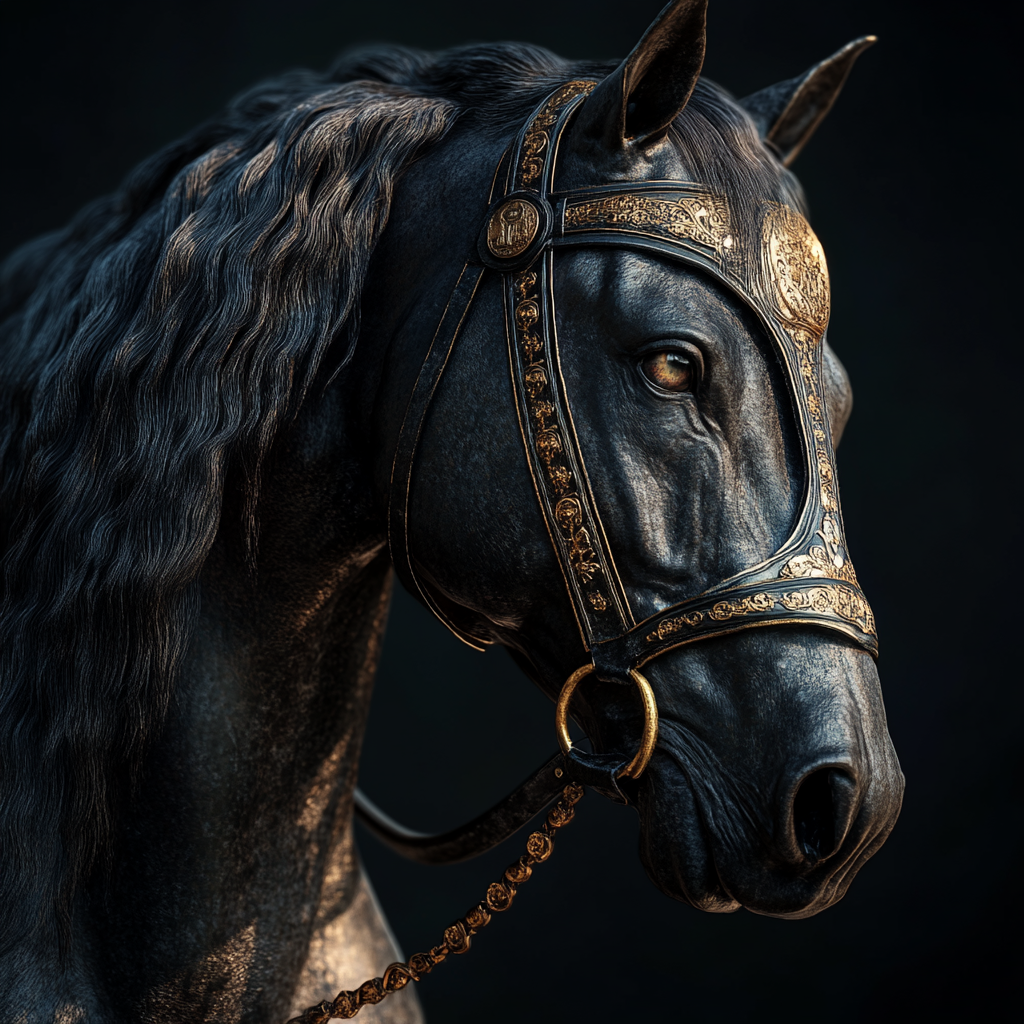

Conclusion
The story of Bucephalus and Alexander the Great is more than a tale of a man and his horse; it is a narrative that has endured through the ages, capturing the essence of the timeless bond between humans and horses. Bucephalus was not just a companion or a warhorse to Alexander; he was a symbol of bravery, loyalty, and the unbreakable spirit that defined Alexander’s campaigns. The enduring legacy of Bucephalus lies in his representation as the epitome of equine excellence, a standard against which the qualities of war horses have been measured for centuries.
Bucephalus’s significance in the story of Alexander the Great is profound. He was a constant presence in Alexander’s life from his youth to the height of his conquests. The tales of their shared adventures, battles, and the deep mutual understanding they shared have become legendary, epitomizing the potential for a profound and life-changing bond between a horse and a rider.
Your own experiences and expertise with horses provide a unique appreciation for this story. Bucephalus’s intelligence, bravery, and loyalty, coupled with Alexander’s respect, empathy, and understanding, reflect the ideals of horsemanship that are as relevant today as they were over two millennia ago. Their story transcends the boundaries of time, reminding us of the incredible impact that horses can have on our lives, shaping our journeys and touching our hearts.
The tale of Bucephalus and Alexander serves as an enduring symbol of the extraordinary relationships that can develop between humans and horses. It celebrates the mutual respect, trust, and deep emotional connection that exists between species, a testament to the powerful bonds formed through shared experiences and unspoken understanding. As we reflect on their story, we are reminded of the significant role that horses have played in human history and the profound impact they continue to have on our lives.
Further reading
- HorseyHooves.com: This site offers a comprehensive article titled “Bucephalus, Alexander the Great’s Horse: History, Facts & Everything We Know“. It delves into Bucephalus’s wild nature, the taming by Alexander, the horse’s significance in battles, and the various theories about his death. The article also explores the origin of his name and his symbolic importance in Alexander’s life.
- World History Encyclopedia: This encyclopedia provides an in-depth look at Bucephalus, including historical perspectives on his death and the significance of his relationship with Alexander the Great. It cites various sources like Plutarch and Onesicritus, offering a well-rounded view of the horse’s life and legacy. Additionally, it lists several books for further reading, such as works by G. MacLean Rogers, Norman F. Cantor, and E.E. Rice.
- TotallyHistory.com: The article “Alexander the Great and Bucephalus, The Great Horse” on this site gives an overview of Bucephalus’s origins, his taming by Alexander, and their mutual understanding. It references Greek historian Plutarch and Roman author Pliny the Elder for insights into the horse’s name and behavior. The article also touches upon the Alexander Romance legends, adding a mythical dimension to Bucephalus’s story.
These resources offer a blend of historical facts, interpretations, and mythological aspects surrounding Bucephalus, providing a comprehensive picture of his role in Alexander the Great’s life and legacy.


